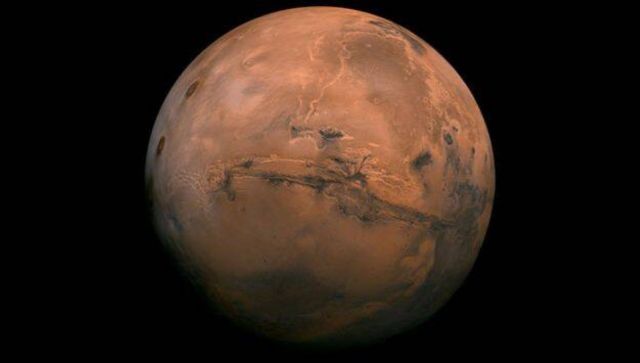In a move to celebrate 20 years of Mars Express, the European Space Agency (ESA) is hosting a <span data-issueid=“ae1b4460-8d64-4612-a60d-32bad61e4a77” data-testid=“issue-underline:” virtual="" “"=”">“live” stream today, 2 June. In the stream, the space agency will show pictures of the spacecraft every 50 seconds. As data travels from Mars to Earth, depending on the two planets’ relative positions in orbit around the Sun, the stream may take anywhere between 3 and 22 minutes to go ‘live’ in the real sense of the word. Therefore, each image portrayed on the live stream will represent an image many minutes before it appears. ESA announced the stream in a post on their official website. They wrote, “For one hour on Friday 2 June, join ESA on YouTube for a space first as live images stream down direct from Mars – this will be the closest you can get to a live view from the Red Planet.” Check out the live stream below: It will begin at 9:15 PM IST on 2 June, Friday. The images will come directly from ESA’s long-lived but still highly-productive martian orbiter, the Visual Monitoring Camera (VMC). https://youtu.be/4qyVNqeJ6wQ Mars Express ESA’s Mars Express mission was launched on 2 June, 2004 and reached the red planet in December 2023. This has allowed scientists to observe the cosmic neighbour in 3D. As a result of the mission, scientists created the most complete map of the atmosphere’s chemical composition. The mission also helped study Phobos, Mars’ innermost moon, in great depth and traced water’s history across the planet. In addition, it has encouraged scientists to believe that Mars may have once maintained an environment suitable for life. With hashtag #MarsLIVE and by following @esaoperations on Twitter, people can also get live updates. https://twitter.com/esaoperations/status/1663921797081833472 James Godfrey, Spacecraft Operations Manager at ESA’s mission control centre in Darmstadt, Germany explained the working of the Visual Monitoring Camera (VMC). He said, “This is an old camera, originally planned for engineering purposes, at a distance of almost three million kilometres from Earth – this hasn’t been tried before and to be honest, we’re not 100% certain it’ll work." He further added, “But I’m pretty optimistic. Normally, we see images from Mars and know that they were taken days before. I’m excited to see Mars as it is now – as close to a martian ‘now’ as we can possibly get!” Read all the Latest News , Trending News , Cricket News , Bollywood News , India News and Entertainment News here. Follow us on Facebook, Twitter and Instagram.
ESA’s Mars Express mission was launched on 2 June, 2004 and reached the red planet in December 2023
Advertisement
End of Article


)

)
)
)
)
)
)
)
)



